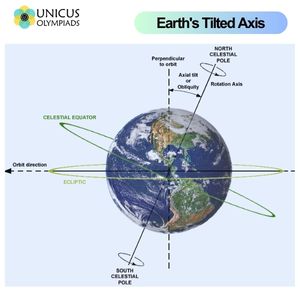

Earth's rotation plays a crucial role in shaping the passage of time and the changing of the seasons. The rotation of the Earth around its axis, combined with its orbit around the Sun, defines the length of a day and year, while also influencing the varying weather patterns and climates we experience throughout the year. In this article, we will explore how Earth’s rotation affects timekeeping, the length of a day, and the seasonal changes that impact life across the planet.
Earth's rotation refers to the spinning of the planet around its imaginary axis, which runs from the North Pole to the South Pole. This rotation occurs once every 24 hours, giving us the cycle of day and night. The rotation of Earth is responsible for the apparent movement of the Sun across the sky, as well as the length of each day.
Earth rotates from west to east, which is why the Sun appears to rise in the east and set in the west. This motion is constant, though it is slightly slowed by gravitational interactions with the Moon and the Sun. Earth’s rotation causes the cycle of day and night, with one full rotation taking approximately 24 hours to complete.
Earth's rotation directly influences the system of timekeeping. The 24-hour day is a direct result of Earth completing one full rotation every 24 hours. The cycle of day and night, caused by Earth’s rotation, led early humans to develop the concept of time as a way to measure the passage of hours, minutes, and seconds.
The Earth is divided into 24 time zones, each approximately 15 degrees of longitude wide. As Earth rotates, different regions experience daylight and darkness at different times. The time zone system was established to account for the time difference caused by Earth's rotation. When it’s noon in one time zone, it may be morning or evening in another, depending on the Earth's position relative to the Sun.
While a day is 24 hours, a year is approximately 365.24 days long due to Earth’s rotation around the Sun. To compensate for the fractional difference, we add an extra day (February 29th) every four years, known as a leap year. This adjustment helps synchronize the calendar year with the Earth's orbital cycle.
While Earth’s rotation gives us the cycle of day and night, the changing of seasons is primarily caused by Earth’s orbit around the Sun and its axial tilt. Earth follows an elliptical orbit, meaning that its distance from the Sun varies slightly throughout the year. However, the primary factor influencing seasons is the tilt of Earth’s axis, which is about 23.5 degrees.
Earth’s axis is tilted relative to its orbit around the Sun. This tilt causes different parts of Earth to receive varying amounts of sunlight throughout the year. As Earth orbits the Sun, the Northern and Southern Hemispheres experience opposite seasons due to this tilt.


The solstices and equinoxes mark significant points in Earth's orbit that determine the start of each season:

The length of daylight is influenced by both Earth’s rotation and its axial tilt. During summer, the hemisphere tilted toward the Sun experiences longer days, while the opposite hemisphere, tilted away from the Sun, experiences shorter days. As Earth rotates, the angle at which sunlight strikes the surface changes throughout the day, leading to varying lengths of daylight at different times of year.
At the equator, days and nights are nearly equal in length year-round, while regions closer to the poles experience more variation. In higher latitudes, such as near the Arctic and Antarctic Circles, there can be periods of continuous daylight (midnight sun) in summer or continuous darkness (polar night) in winter, depending on the tilt and rotation of the Earth.